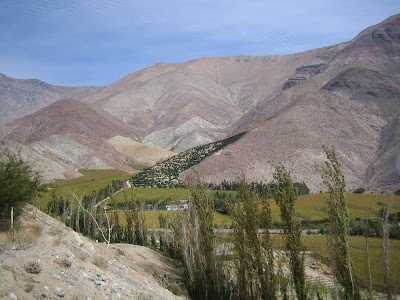



Thursday, May 8 – Day 142
I toured the Sacred Valley of the Inca’s today. The valley runs from Pisac to Machu Picchu and beyond. The Wilcamayu River runs along the valley floor all the way to Machu Picchu, eventually enters the Amazon, and ultimately flows into to the Atlantic Ocean. The name means “river of life” and Wilkamayu is also the name that the Inca’s used for the Milky Way.
Pisac looks kind of like a mini-Machu. The terraces are believed to have been used more as an agricultural laboratory than for production. Each terrace has its own micro-climate, and it is believed that the Inka would experiment with different strains of crops here. Peru has 3,000 different kinds of potatoes, and 800 different types of corn. Outside the ruins I had a roasted corn on the cob that had individual kernels the size of sugar cubes.
Pisac looks kind of like a mini-Machu. The terraces are believed to have been used more as an agricultural laboratory than for production. Each terrace has its own micro-climate, and it is believed that the Inka would experiment with different strains of crops here. Peru has 3,000 different kinds of potatoes, and 800 different types of corn. Outside the ruins I had a roasted corn on the cob that had individual kernels the size of sugar cubes.
The three Inca villages of Cusco, Pisac, and Pikillacta form a perfect equilateral triangle on a map. Each leg is precisely 30 km long, and all three cities are at the exact same elevation. And nobody knows why. There is no line of sight between the cities because of the mountains, and this was done over 500 years ago. I think it’s probably just a coincidence.
Ollantaytambo contained the most important astronomical observatory in the Incan empire. Pisac also had an observatory, but the Spaniards destroyed them both. They wanted to convert everyone to Catholicism, so they busted up everything that they thought the Inka used for religious purposes. They didn’t know that they were rather precise scientific instruments.

















.JPG)






























